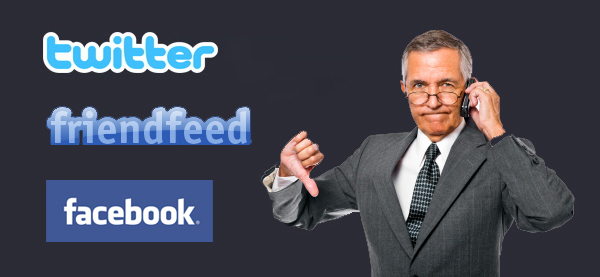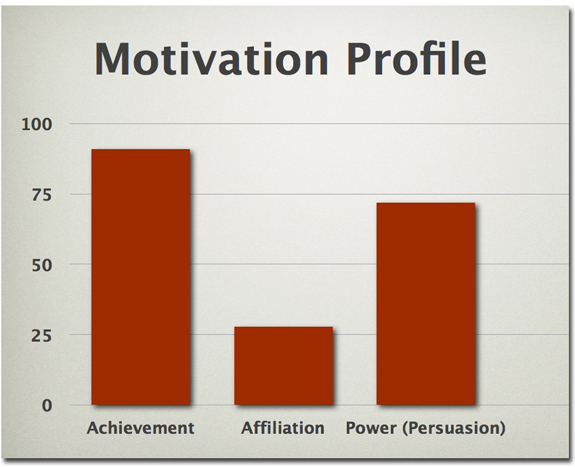 Your boss, executive client or any other leader with whom you’re dealing (or perhaps even you, yourself) may not intuitively understand social media. This is not because of a lack of understanding or the technical acumen to use some internet connected device and hosted software, but more likely because they don’t feel the need to put forth the effort or energy to embrace it (or why anyone else would goof with social media, for that matter).
Your boss, executive client or any other leader with whom you’re dealing (or perhaps even you, yourself) may not intuitively understand social media. This is not because of a lack of understanding or the technical acumen to use some internet connected device and hosted software, but more likely because they don’t feel the need to put forth the effort or energy to embrace it (or why anyone else would goof with social media, for that matter).
As social media continues to accelerate as a method of connecting people to one another as well as to news, information and other snippets of value, I keep thinking about people who aren’t all that social, are not inherently “connectors,” or are folks who are simply not all that interested in connecting with other people in some virtual way.
Years ago I always thought not being social was, well, being antisocial. Being one of the weirdos who smell bad and can’t be trusted around small animals or children. The guys you see leaving Blockbuster on a Friday night with 10 videos…for the weekend. The hermits whom I always seem to stumble upon when hiking in the Superior National Forest and who abhor bumping in to anyone.
Then I became enlightened.

When I was running strategic alliances at Lawson Software, the company sent all the VPs through various executive workshops run by a behaviorial consulting organization in Los Angeles. One I attended required an assessment that resulted in my receiving a personalized “motive profile” when I arrived in La Jolla, CA for the workshop and was a document that surprised me greatly.
This assessed profile was based on the work of the late Harvard professor David McClelland, in which he proposed that an individual’s specific needs are acquired over time and are shaped by one’s early life experiences. Most of these needs can be classified as either achievement, affiliation, or power (or what McClelland apparently wished he’d called that last one: influence due to “power’s” often miscontrued meaning) and are hard-wired into each of us by the time we’re 4 or 5 years old.
I was surprised to discover that I was a “power V” with 91% achievement, 28% affiliation and 74% power which is an entrepreneur’s profile (large organization CEO’s typically score the same but are in the upper 90th percentile in achievement and power while being even lower in affiliation needs).
When these results were handed to me by the workshop leader, I was stunned since anyone who knows me would laugh at the notion I’m low on affiliation and actually not a social animal. I complained to our workshop leader immediately and he asked if we could post my results so the group could talk about them.
“What troubles you Steve,” asked Dan, the workshop leader, as he wrote my scores on the board. “28% in affiliation!?! But I *like* people, can talk to a rock and have always been perceived as an extroverted good host at parties and a fun coach and mentor,” I protested. Dan calmly explained to me (and the group) that what our scoring meant was the measure of what each of us needed to be whole and satisfied each-n-every day. He explained that I had an innate drive to achieve, to influence others, but mostly didn’t need to be around or connect with people at all in order to meet my daily core needs.
I calmed down. This was a pretty accurate profile since affiliation with others wasn’t (and isn’t) a motivator for me. Though I find my best ideas and energy come from being around others and brainstorming, I must admit that I do love solitude and need daily time by myself to feel whole. Learning this about myself was (and still is) incredibly instructive, but has been more so as I’ve been involved in the social media space. The lessons I learned from this personal “Aha!” has informed my interactions with executives and leaders while providing me with new insight into how to consult with companies on social media and internet platform initiatives.
So what’s the lesson in all of this for you?
Almost all the other executives at that La Jolla workshop were the same relative motive profile as me. Other leaders with whom I’ve interacted with in the years since are also the same ‘power V’ as well. These are probably sweeping generalizations, but my subsequent experience has proven them pretty accurate and worth noting:
1) Factor in a typical executive’s low need for affiliation when you’re pitching your boss, executives or client leadership on internet or web innovations that you think are a no-brainer to move forward on. Chances are they’ll be less-than-interested in what you’re proposing if it’s all about social media connections vs. promoting efficiencies (i.e., achieving better results) or for ways in which people can be persuaded en masse.
2) If you’re a ‘power V’ yourself and are the decision-maker, understand your own motives, needs and perspectives as you listen to the pitches, and factor that in when you listen to the vision being proposed.
3) What works to get me engaged with social media — and might be one you’ll find useful too — is when people who are connectors and love doing so (like my friend Lonny Gulden, the man with the biggest rolodex in Minnesota and over 4,700 connections in LinkedIn) — see the connection between people and the value it could create by putting us together and they do so. This is always highly valuable (and I so appreciate it) when he and others do it, and I’d recommend that if you’re low on affiliation, ask the connectors in your life to make those connections.
4) Finally, if you’re contemplating social media for you or your organization to use or harness in some way for marketing or community building purposes, consider that you — like every other organization trying to leverage existing social media connections — that attempting to reach and leverage influencers is going to be a challenge. Chances are the leaders and influencers you want to reach (even if they are online and participating in social media) could care less about playing in your sandbox unless you are overt, are a good host and provide them with ways to achieve or influence rather than just connect.
One senior sales & marketing leader from a large local company I talked with recently — who has an atypical awareness of the social media technology space but admits he could care less about building relationships, community or honing his people skills — said it best when I asked why he didn’t invest time using Twitter sending out tweets, blogging or otherwise creating a presence in the social media space. “Because I’m getting sh*t done and I can’t invest my attention or energy there.“